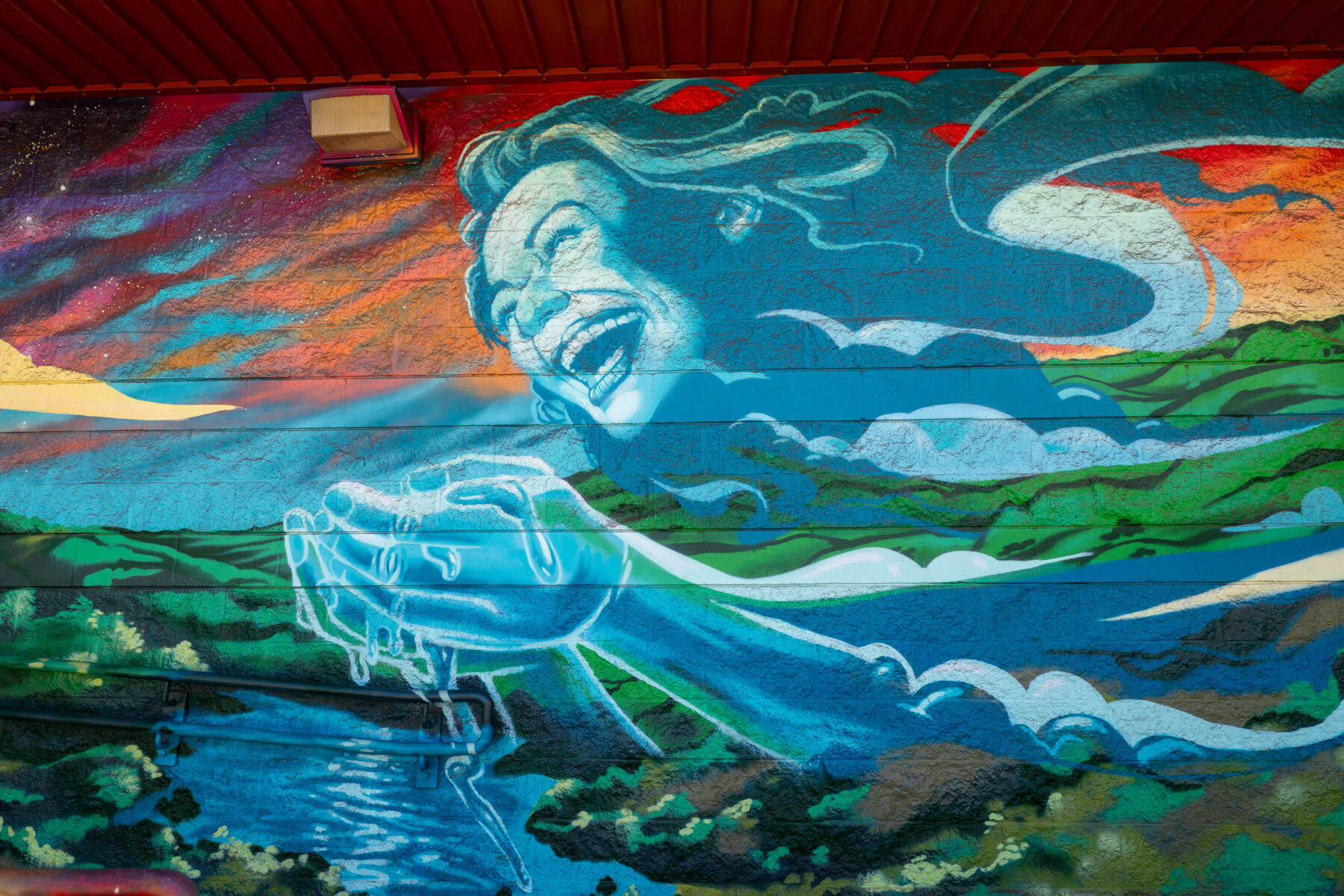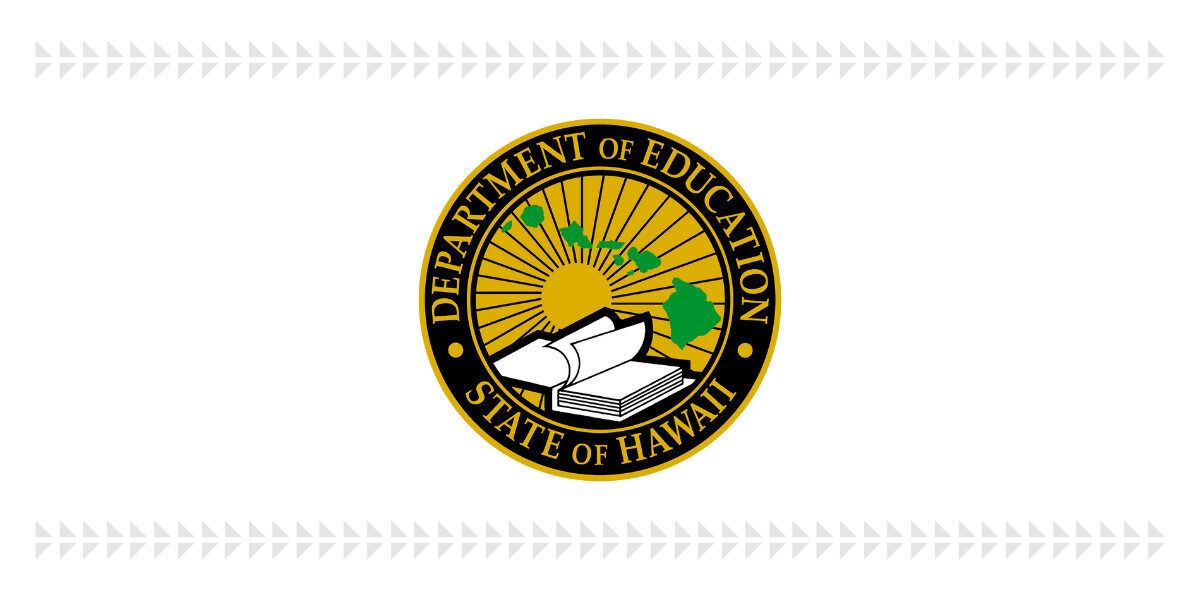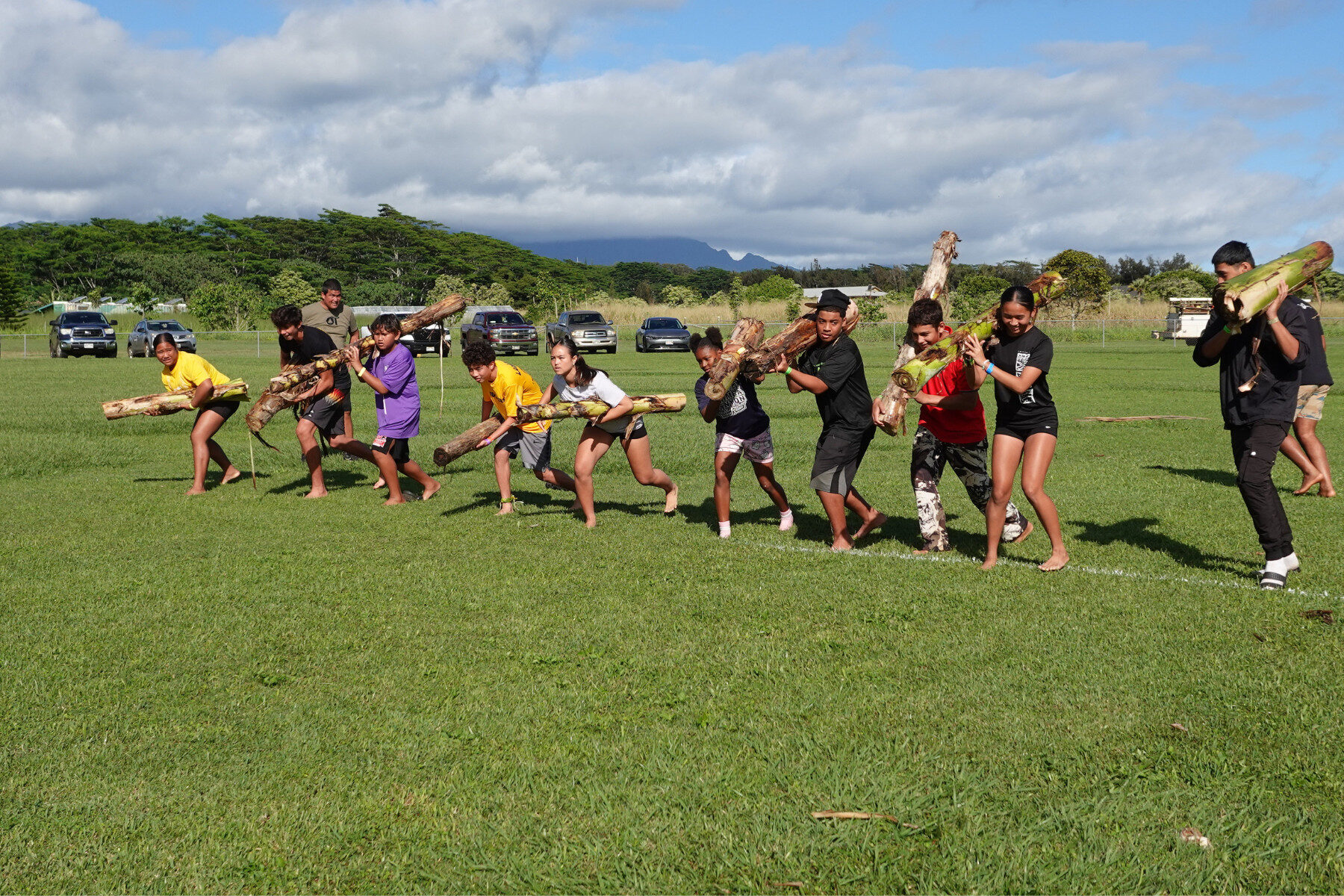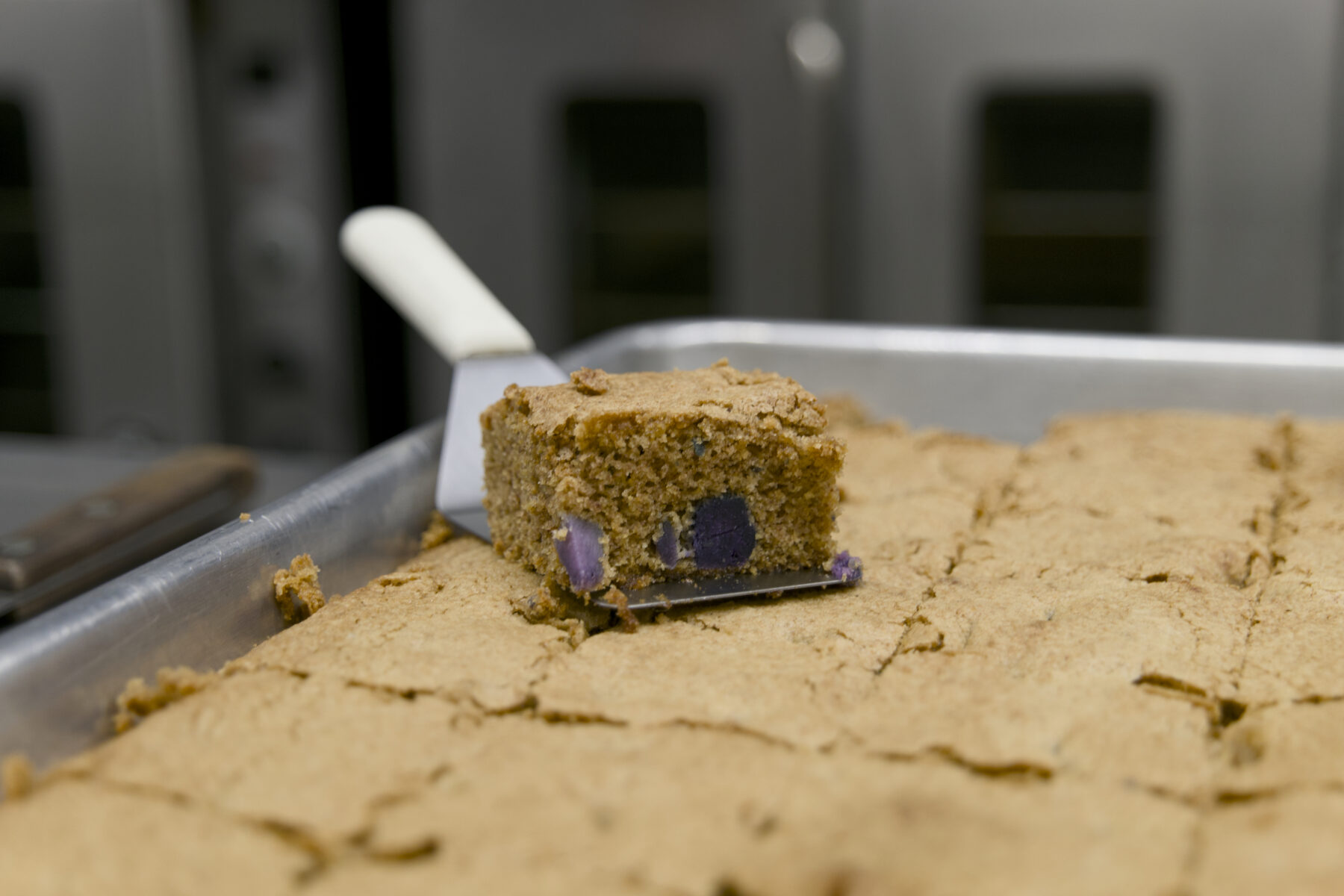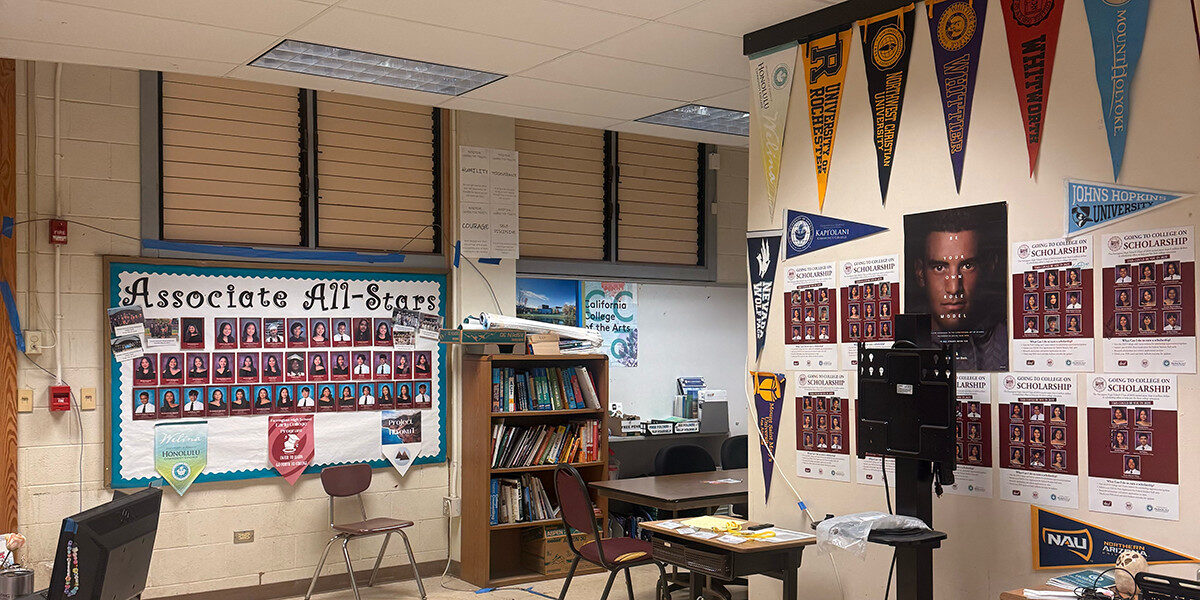Painted with the bold reds, oranges, and purples of Waikoloa sunsets and inspired by the moʻolelo of the ahupuaʻa, mural “Kawaikōloaokawahine” at Waikoloa Elementary & Middle School centers ancient Hawaiian history and a deep sense of place in the middle of campus.
Created in 2024 with the help of Mele Murals, the fifth grade class experienced a unique process where moʻolelo ʻāina (stories of the land), mele (song), and meditation were used to weave imagery and place-based themes into large-scale art. This approach strengthened students’ creative and critical thinking skills while deeply connecting them to local history and sense of place.
To expedite the creative process, Mele Murals Executive Director Estria Miyashiro aspired to have the students “turn off” their academic brains and lead with their piko and naʻau (inner wisdom) to guide inspiration and insight. These meditative sessions lent to the ethereal feeling of the mural such as the wispy imagery of deity Waikōloa floating down from the mist and golden, ribbon-clouds.
The fifth grade students that were part of the Future Foresters Club ventured out for an environmental and cultural excursion to the Waikōloa Dry Forest Preserve, just steps from campus. During this exercise, students “kilo” their surroundings, and noticed natural rock formations, foliage and fauna. Taking cues from the barren landscape, the students integrated craggy lava, ancient flowering wiliwili trees and even the top of Mauna Kea. The mural pays homage to both the students’ keen observation and the surrounding environment.
A secret formula seeded into the mural creative process was hōʻailona, meaning signs or symbols. According to Estria, the day before the mural, he saw pulelehua, King Kamehameha butterflies, flitting about the shrubbery in front of the library. These rare butterflies are one of two endemic species found in Hawaiʻi and were crowned the state insect in 2009. The pulelehua became part of the mural, a reflection of the King’s Road – only used by aliʻi – that traverses throughout the region.
“O ka wai ke ola e kō ka mana he loa ke aloha.” On every mural, Estria seeks to embed lyrics that embody the mural. In a chicken skin moment, cultural practitioner Kealiʻi Bertelmann said that this chant came to him the moment he stepped onto campus. Translated it means, “Water is life, water gives power—aloha everlasting.” This moment underscored the cultural importance of mele as a tool to pass down wisdom and insight to the next generation.
Waikoloa Elementary and Middle’s mural project did more than just beautify the campus—it showcased the history of the ahupuaʻa as part of the school’s cultural identity. This fiery mural serves as a vibrant source of pride for students, ensuring that the stories of this land will be a central part of their education and inspiration.
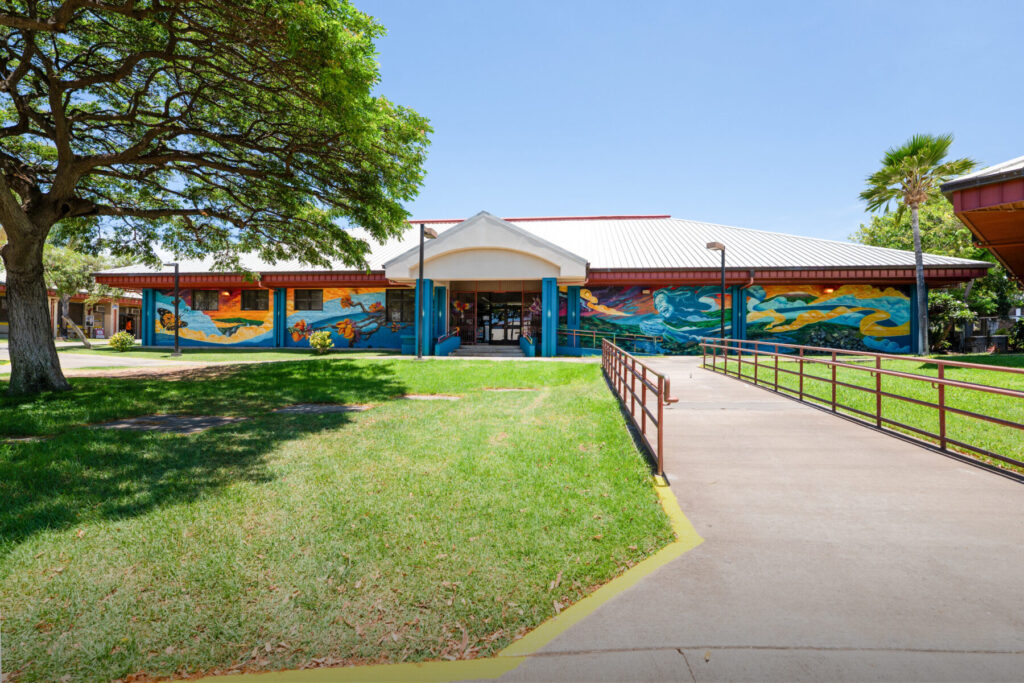 Mele Mural “Kawaikōloaokawahine” graces the library at Waikoloa Elementary and Middle School
Mele Mural “Kawaikōloaokawahine” graces the library at Waikoloa Elementary and Middle School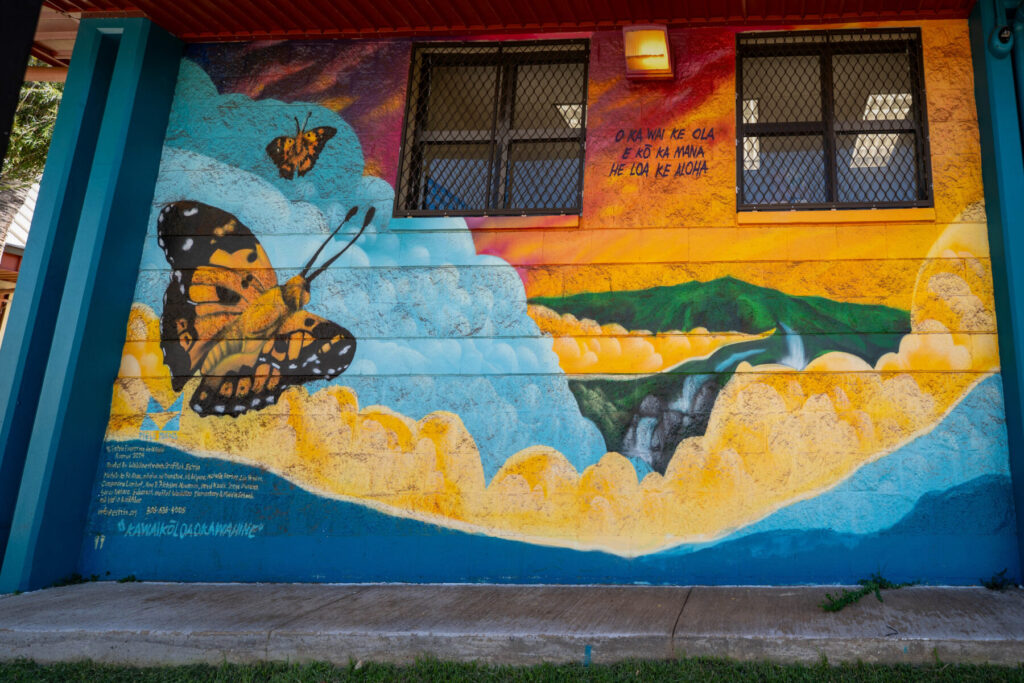 The endemic King Kamehameha pulelehua appeared on campus and on the mural
The endemic King Kamehameha pulelehua appeared on campus and on the mural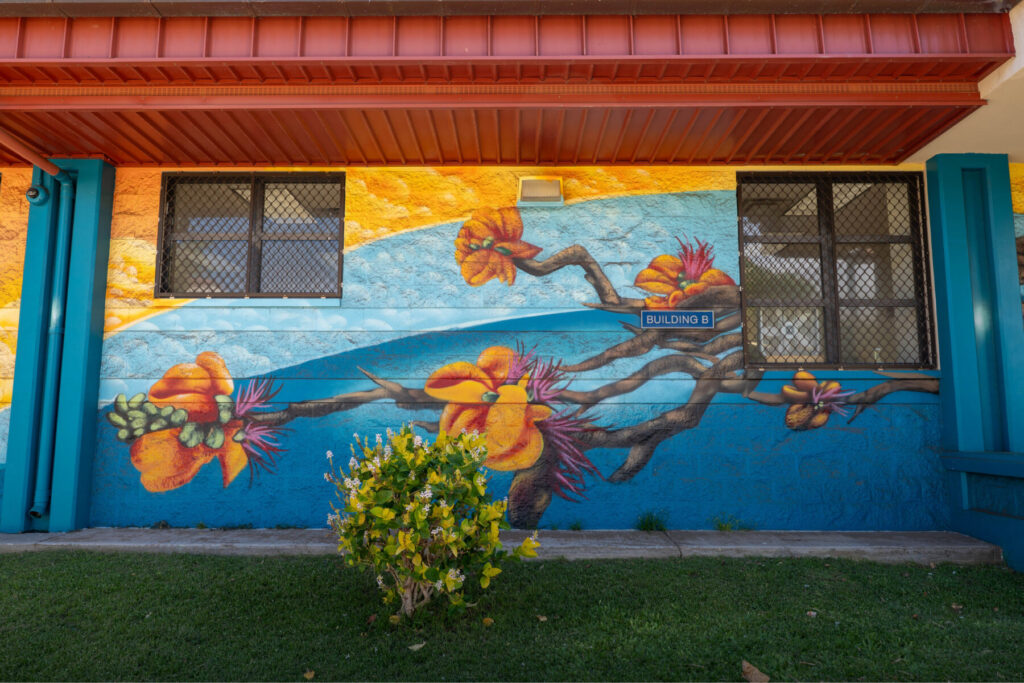 Wiliwili trees are found in the Waikōloa Dry Forest Preserve close to campus
Wiliwili trees are found in the Waikōloa Dry Forest Preserve close to campus Goddess Waikōloa floats in the mist
Goddess Waikōloa floats in the mist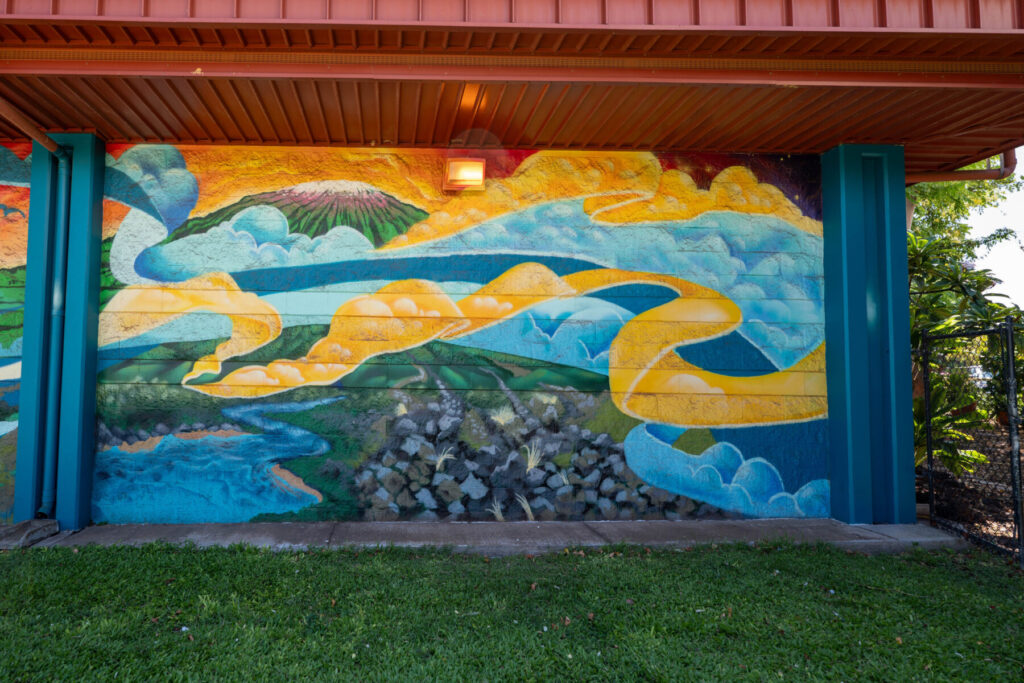 Golden ribbon-clouds give an ethereal feeling
Golden ribbon-clouds give an ethereal feeling

